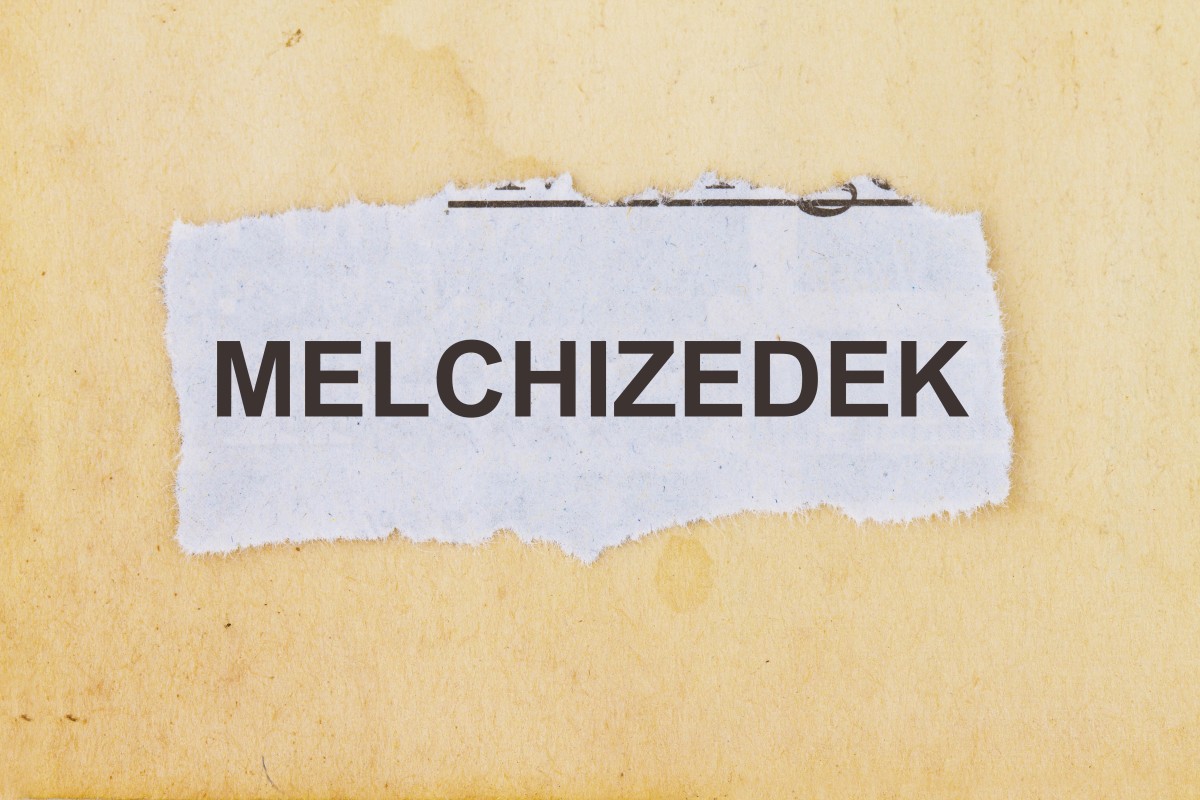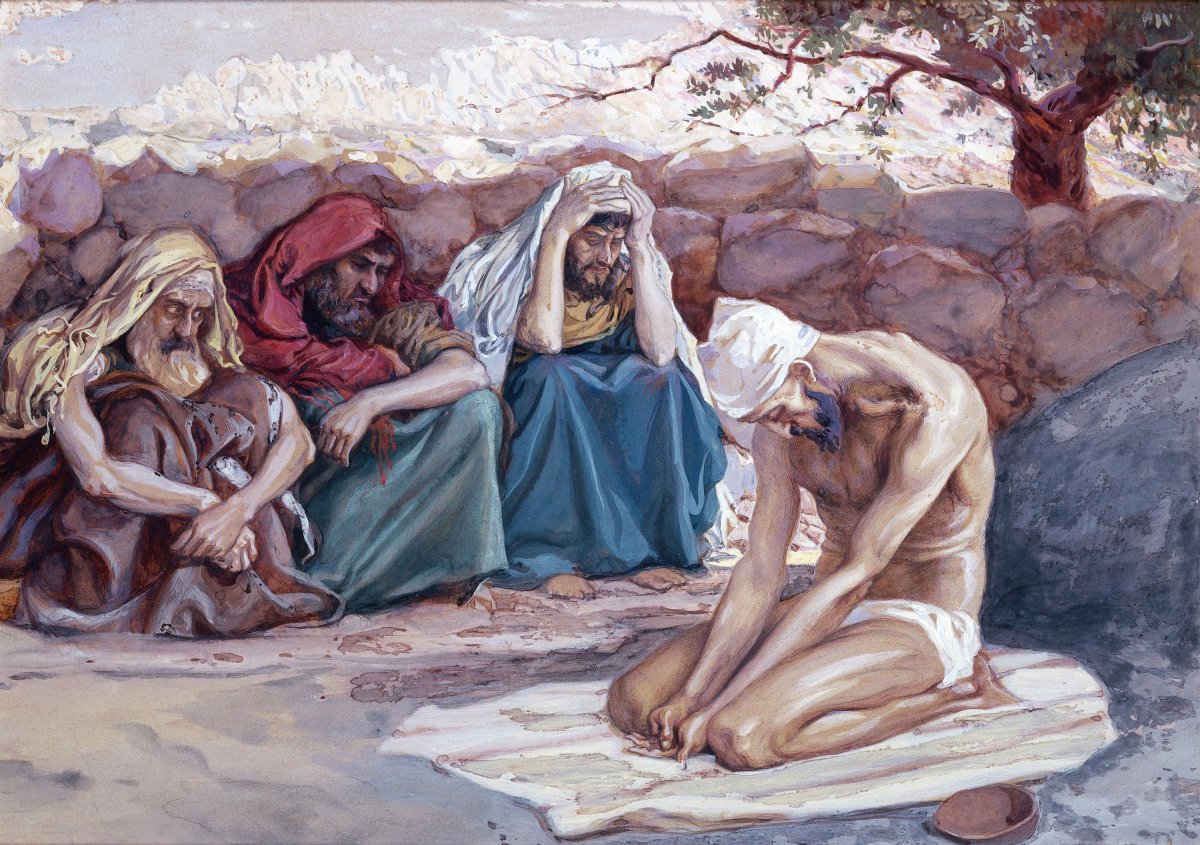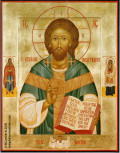The Eucharist and the Power of the New Law
A Section of the Priests of the Catholic Diocese of Aba on the march to the Altar for the Cathedriaticum last Thursday, 13th April, 2017. I am on the 1st row
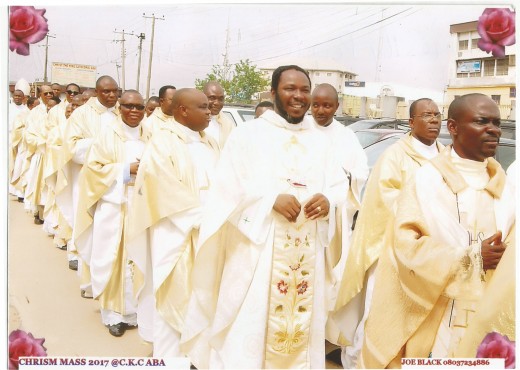
The Eucharist and the Power of the New Law
By Fr. Kenneth Chinkata Evurulobi, PhD.
(This piece denotes my Reflections on the Holy Thursday Feast some aspects of which I co-opted into my Homily during the Mass of the Lord’s Supper on Thursday, 13th April 2017 at St. Dominic’s Catholic Church, Federal Housing Estate, Ogbor Hill, Aba. I have, since after the Holy Thursday celebrations, resisted the temptation to develop this Reflection as a purely academic engagement outside the context of a homily because doing so would lead to confiscating the rich Eucharistic thoughts which the reflections hold from the ordinary Christians that occupy the pews every Sunday in our different parishes hoping to confirm and deepen their faith. The fact that the faith of the Church is a Eucharistic faith has compelled me to, not only retain the homiletic approach, but also to reconstruct and build the entire corpus into a homily).
The gospel reading of the Mass of the Lord’s Supper is taken from the 13th Chapter of St. John’s Gospel.
It seems, after a historic triumphal entry into Jerusalem and right there at the Upper Room and as a principal witness at the last but crucial meeting that took place between Jesus Christ and his Council of Ministers, John the Evangelist picked up his pen and notebook to record the minutes and events of that meeting. And it may not be an assumption far removed from reality that the whole joahnine treatise signifies a bold and successful anticipation and a theological analysis of the Eucharistic faith.
According to the Report of the Minutes that is available to us in the gospel of today, in the Synoptics, and as attested to by the tradition of the Church, Jesus used the occasion of that meeting to accomplish three things:
- Ø The Institution of the Holy Eucharist.
- Ø The Inauguration of the Ministerial Priesthood.
- Ø The Promulgation of the New Law.
And with these three accomplishments, our Lord and Master Jesus Christ ratified, signed and sealed His Will for the New Family of God, the Church (The phrase “Our Lord and Master, Jesus Christ is used here in the sense of the meaning and significance given to it in Pope John Paul II’s Encyclical Dominus Iesus – which grew out of the scriptural testimony that there is no name given in heaven above or on earth below by which man can be saved except the name of Jesus. Another place, scripture says for, at the mention of the name of Jesus, every knee shall bow and every tongue shall confess that Jesus Christ is Lord – to the Glory of God, the Father (Philippians 2:10).
Christ the King Cathedral, Aba.

The Institution of the Holy Eucharist.
The Eucharist is a Mystery. In the words of Karl Rahner, Mystery is defined, not as the “Undiscovered Unknown” (something never ever fathomed or discovered and therefore unknown and unknowable) but the “Discovered Unknown” (something fully discovered, tangible and experiential but yet not fully known or understood).
Bread and Wine are presented to us, but we see Jesus actively and perpetually present and giving us his Body to eat and his Blood to drink.
To achieve the level of conviction required for the faith in the Eucharist, the 1st Reading today evoked the testimony of ancient Israelite tradition which was a prefigurement of the Eucharistic Feast.
It traced the origins of the Passover and situated it in its rightful context as a “Thanksgiving” Feast. This feast marked the people’s commemoration of God’s powerful redemptive works which he accomplished on their behalf against the infernal powers and oppressive systems of Egypt. This thanksgiving service was celebrated in the context of a Meal and called “the Feast of the Passover”.
According to some exegetical analysis done by the authors of the 12 Volume Interpreters’ Dictionary of the Bible, the narrators of the book of Exodus as seen in the 1st Reading introduced to us a series of laws covering three Israel’s socio– cultic observances. Each of these rites – Passover, Unleavened Bread, and the Dedication of the First Born - are said to derive their meaning from the event that is presented in the 1st Reading. And in all probability, that of the history of all the three rites goes back to a time before the Exodus which existed either among the Hebrews or among other groups in their neighborhoods. But in the context of the prescriptions and modifications introduced by Moses and Aaron at the eve of the departure of the chosen people from the land of Egypt, the Passover took a new meaning and assumed a significance in the life and practice of the people of God as an irrevocable historical moment in the confirmation and upgrade of the Abrahamic Covenant. Clear instructions were given about the ritualistic meal - its symbolism and its re-enactment as a Memorial Sacrifice of Thanksgiving celebrating the saving power of God which he wields over Israel.
There is, however, one characteristic feature of the Old Covenant. It was merely provisional. As the people celebrated the feast and lived in the euphoria it provided, they looked forward to, and in fact, yearned for the fulfillment of that covenant by the event of the coming of the Messiah.
Quite evidently the Messiah was born. Jesus Christ is the Son of God. And he came to fulfill the Law and the Prophets. This Fulfillment which was the expectation of the Jews is what Jesus accomplished in the Gospel Reading of today by the event of the Institution of the Holy Eucharist.
John the Evangelist did not bother to pronounce the words of the institution as found in the Synoptics. But those words are evidently clear in whatever they tended to profess and represent.
No wonder this Mass is called the Mass of the Lord’s Supper. This is true of every Holy Mass. The Mass is a Love Feast or a Celebration of Love.
God came down to us in the person of Jesus Christ. For, in him (Jesus Christ) all the fullness of God was pleased to dwell, and through him to reconcile to himself all things, whether on earth or in heaven, making peace by the blood of his cross (Colossians 1:19–20). He has seen and assessed the situation. And now it is time to go. But before that, he must conclude his work of Redemption.
What kind of souvenir would be super-effective and enduring in making him actively and perpetually present and functional in our individual lives and in the community of believers?
Thus, in his omnipotent, omnipresent and omniscient capacity, Jesus took the “BREAD”, blessed it – the words of the consecration - and gave it to his disciples saying:
TAKE and EAT – Eat what? Bread?
No! This is my Body. Eat my Body!
Between the time Jesus took the Bread and prayed over it and the time the Bread left his sacred hands, the Body or the Flesh of the Son of Man is what we receive and what is preserved in the Blessed Sacrament.
That is true also about the “WINE”.
If you like you can call it – Anamnesis, Epiclesis, Transubstantiation, etc.
But to put it in purely Igbo tongue, I refer you to the Igbo catechism: Oge Oriri di aso gasia, achicha na mmanya o ka afodukwara ka?
Mystery! You would say!
Or,“Ihe Omimi!” Yes!
What did Jesus take in his hands?
1st Bread, then 2nd Wine.
And what did he say? Take this!
What?
“This!” (‘Ihe” in Igbo Language)
To discover the depth and power of the Igbo word “ihe” and the significance it holds for the development of Eucharistic thought in Igbo consciousness, we may be constrained to rely on the metaphysical and practical principles of complimentary ontology (Ibuanyidanda) as developed by Rev.Fr. (Professor) Innocent Asouzu.
According to Fr. Innocent Asouzu, any mode in which being finds expression (referring, in this case, to the Body and Blood of Jesus Christ finding expression in the species of Bread and Wine) has an intrinsic moment of dynamic mutual service in complimentarity. Thus, the Eucharist satisfies the metaphysical and practical principles of complementarity which states that anything that exists serves a missing link of reality.
The Igbo word for a thing or something is ihe. We sense, feel, intuit ihe as the most primordial existent. By the word ihe, we sense, feel and intuit immediately something that becomes all the more expressible through the word di. In other words, we sense, feel, intuit ihe in its immediacy but it gets more concretely graspable through di. We can then say that di mediates ihe in its immediacy. This is why the English copula “to be” can translate to di. When di is applied to ihe in its immediacy, we say in Igbo “O di” (it is) as different from “o ga adi (it shall be) in respect of a future referential framework of existence. In this case, what is or being translates to ihe di. This is when we refer to everything that exists as ihe di (singular) and ihe ndi di (plural). This can translate to the English word “Being”. Using a similar table as Edeh Emmanuel (cf Edeh, Emmanuel Mp; Towards an Igbo Metaphysics, Chicago, University Press, 1985, p97-102), Asouzu showed some examples of modes of being and existence. Thus:
Okwute-di – stone is or stone exists
Muo-di – spirit is or God exists.
Chukwu-di – God is or God exists.
The effort made by Asouzu to distinguish Substance (ihe kachasi mkpa – the thing that is most important) and accidents (ihe ndi di mkpa – the things that are important) goes to show that the species of Bread and Wine (accidents) which form the “matter” of the Eucharist do not contradict the Body and Blood of Jesus Christ (Substance) which are the “form” of the Eucharist.
But, as Asouzu correctly pointed out, it is not enough to say that a thing is or exists within the framework of the new complementary ontology, it is necessary to state its mode of being within a complementary horizon.
Thus, he writes:Complementary mode of relationship is thus directed especially against three ways of understanding the idea of causality. In the first instance, it is directed against an abstract dichotomizing understanding of the idea of causality. In this abstract form, the agent has the character of an efficient cause that impact on the effect without an inherent moment of mutual complementary relationship exiting between it and its effect. In this case, what causes and the effect produced remain separated form each other in the mode of relationship existing between two discrete quantities. We are dealing here with an understanding of causality that is excessively disjointed in its idea about the nature of relationship existing between an agent and its effect. In the second instance, a complementary mode to understanding cause seeks to supersede that idea of causes, here a series of agents combine to bring about an effect. However, these agents are so linked and closed to themselves that they exclude the possibility of admitting any other agents within the framework of what is needed to produce an effect. It is still directed against a third sense of understanding causality. This is that understanding of causality that admits of mutual relationship, but does not conceptualize this in the sense of mutual complementary relationship between the agent that impacts and the effect that is produces. We are dealing here with a mode of understanding causality, which negates the moment of intrinsic complementary future relatedness between the agent and its impact. In all modes of complementary relationship, there is always an intrinsic connection between missing links in all thinkable mode of their self-expression insofar as they have to deal with the human agent, whose being, by necessity, bestows this dimension of complementary in service.
Generally, though, if there is any illusion connected with the idea of causality, as it is normally understood, it is that arising from the assumption that an agent, as an efficient cause, impacts on its result or effect, such that there is no intrinsic necessary mutual relationship of a complementary type between both. This illusion is real and it is an illusion of an ontological type. This is that situation where we assume that an agent, that is a cause, is not a priori and intrinsically so constituted in its nature as to remain in the mode of relationship of mutual complementarity with all thinkable modes of being. (Asouzu, I.I, Ibuanyidanda, New Complementary Ontology, Zurich, LITVERLAG &Co, 2007, P286-287)
The relational mode which Bread and Wine serve in Eucharistic Theology does not endanger in any way the very Being of God which they symbolize. While the Jesus of History, in his life and ministry, is the authenticating factor of this symbolism, the Jesus of faith is the concretization and actualization achieved by this symbolism.
The spiritual invocations of the Word of God and Blood of Jesus as prevailing factors or force of recreation, redemption, sanctification, transformation, healing, deliverance, renewal, e.t.c, in the community of faith or in the life of an individual as found in Pentecostalism and the upgrade to a communion service that does not admit of the Real Presence which preceded it as found in traditionalist and evangelical Christian communities signify centrifugal and reductionist attempts that, if anything else, seek to dichotomize between the historical Jesus and the Jesus of Faith.
The Eucharist forecloses and erases the dangerous polarizations and ambivalences that characterize and rule our thinking and behaviors in our relationship with God both as individuals and as a people - the worst of these being the polarization and ambivalences associated with our thinking and manner of acting which grow out of the attempt by eccentric religious mentality to dichotomize between the Jesus of History and the Jesus of Faith. Admittedly, there exists some notable differences between the two, but this is only at the level of conceptualization. Here, I consider Asouzu’s theory of complementarity quite expedient especially in reference to the intrinsic unified character of the system of complementary reflection regarding the two variants – the principle of integration (metaphysical) and the principle of progressive transformation (practical) - upon which the theory rests.
Thus, even as a mystery (or to use a Rahnerian phrase, the Discovered Unknown), the Eucharist asserts the unity and indivisibility of God and, at the same time, underlines, for practical purposes, the fact that the life and works of Jesus which are accomplished within time under some necessary historical preconditions now transcends time and in this way make a re-creational, redemptive and sanctifying mission in which men and women of every age, generation, color, race and language are directly involved by virtue of their being a human being made in the image and likeness of God possible . Here, the self-evident character of the Eucharist as the ultimate and most efficacious complementary mode of divine relationship shines out and takes on an additional significance in respect of globalization. In this respect, the Eucharist – the “I” of Jesus Christ that finds a habitation in the community of faith (whenever the Holy Mass is celebrated or wherever the sacred specie is preserved as Blessed Sacrament) and in our individual lives (whenever we participate actively and receive Jesus Christ as Holy Communion in the form of Bread and wine) – is the harmonizing faculty (obi/mmuo eziokwu) of the transcendent categories of unity of consciousness (or forms of the mind) in the event of complementary transcendent existential conversion of maxims into general laws or Being–in-control (ima-onwe-anyi).
In this way, our relationships of love and service would have the capacity to answer to the severe problems of polarizations and ambivalences that characterize and rule our minds and behaviors without taking the unproductive step in the direction of seeking to dissolve totally the basic but necessary contradictions that define life and make existence more meaningful.
Do not be a cannibal or a blood sucker but you must eat of the Body of the Son of Man and drink his Blood! That’s what it means to be a Catholic.
The Faith of the Church is a Eucharistic Faith. Are you a Catholic? Remarkably, this question cannot be answered correctly without reference to one’s relationship with Jesus Christ in the Eucharist.
The Eucharist is the final shape and form Jesus Christ took as the perpetual presence of divine love at work in the world in a total and irrevocable donation of God-self to humanity through the Church. n the Eucharistic specie, the limitless omnipotent, omnipresent and omniscient Being of God who came to us in Jesus Christ and remains with us in the Holy Spirit as Love is fully and actively downloaded and disposed for a dialogue and an encounter in view of a transformative action of our individual lives and the life of the world. It is the visible shape and form of Jesus Christ who is God as he remains and works with us by the power of the Holy Spirit for the purpose of transformation. In the Eucharist, God continues to create, to redeem and to transform creation in an act of sacrificial love.
At the end he said: “Do this in Remembrance of Me”.
The Inauguration of the Ministerial Priesthood
In the 1st Reading Moses instructed the people to celebrate the memorial of the Passover. Here also, Christ asked his disciples to do the same.
That is to say that Jesus Christ commanded His disciples to repeat after him and accomplish for all ages and peoples, by His Authority and following his example, that which he did and accomplished before them.
No priest of the Old Covenant, including Moses and Aaron, possessed the power to accomplish what Jesus accomplished. Whatever they accomplished in this connection was an “imitationist” copy of the original accomplished by Christ by virtue of the institution of the Eucharist.
Surely, there are Barristers and Attorneys who live around you. And there may also be judges or high ranking officials of the justice ministry you may know. Ask them, and they will tell you that once a “WILL” is ratified, signed and sealed in a very valid and legitimate manner, it cannot be altered except by the author of that particular will. But if the Author is dead, then the “WILL” is regarded as being “irrevocable” in legal terms, and must therefore be implemented in strict accord with the terms of reference as laid down. The last acts performed by the dying are always considered symbolic. This is the character of this meeting of the Apostolic College convoked at Jesus’ own instance as the Head and the events accomplished therein. In this meeting that is theologically referred to as a Eucharistic Feast, Jesus Christ presented his “WILL” to the Apostolic College, ratified, signed and sealed it with his own Blood. In the gospel of John, Jesus told the skeptical Jews, I and my Father are one (John 10:30). Somewhere again he says; my “WILL” is to do the “WILL” of my Father who sent me. Precisely, in the gospel of John Chapter 5:19, Jesus said: “The Son can do nothing on his own but only what he sees the Father doing: for whatever the Father does, the son does likewise”. In verse 20, he says: the Father loves the son and shows him all that he himself is doing”. Thus, between Jesus Christ the Son of God and God who is his own Father is established a unity of “WILL” in an irrevocable communion of Eternal Love. Therefore, Jesus Christ used the occasion of His meeting with the Apostolic College to “unveil”, or “reveal” and demonstrated in a very solemn and practical manner the “WILL” of His father for all those who belong to Him. The Eucharist is an irrevocable “Divine WILL”. Another word that can comfortably replace the word “WILL” in English Language is “CONVENANT” or “TESTAMENT”. An old “WILL” or “CONVENANT” which was certified to have the authority and stamp of Divinity has been in place since Abraham. This “WILL” was ratified and sealed, not by God himself or the Son, but by messengers with the animal blood. In other words, it was merely “PROVISIONAL”. But in this meeting, the rightful “HEIR” evoked the old Will, confirmed it, purified it by extinguishing the imperfections and confusion which characterized it as a result of being a Divine TESTAMENT” placed and managed by a “DELEGATED POWER” and then upgraded and sealed it with his blood. By virtue of this “REVIEW” of the Old Will or Covenant by He who alone has the power to do it; He who alone is the Alpha and Omega; the First Born of all creation and the Heir to the throne of Divinity, a “NEW WILL” or a NEW COVENANT” was accomplished which has the character of IRREVOCABILITY” and “UNIVERSALITY”.
After the Apostles had recovered from the devastating shock of the crucifixion and Death of our Lord and Master, strengthened by the event of the Resurrection and radically empowered by the Pentecost experience, the Apostles implemented and defended the “NEW CONVENANT” with their own blood.
In the 80s in Leadership Newspaper, Fr. (now Msgr) Theo Nwalo featured a series of articles under the column: You Become What You Eat. The Holy Communion divinizes and brings out the image of God in us.
The institution of the Eucharist was ratified, signed and sealed by the Crucifixion and Death of Jesus Christ. But it’s final and most radical actualization is anchored on the Resurrection. The Eucharist is therefore tied to and remains inseparable from the crucifixion, death and resurrection of Jesus Christ.
According to Hebrews 9:22-24, …when Christ came as high priest …he entered once for all into the sanctuary, not with the blood of goats and calves but with his own blood, thus obtaining eternal redemption.For if the blood of goats and bulls and the sprinkling of a heifer’s ashescan sanctify those who are defiled so that their flesh is cleansed,how much more will the blood of Christ, who through the eternal spiritoffered himself unblemished to God, cleanse our consciences from dead works to worship the living God. For this reason he is mediator of a new covenant. Now where there is a will, the death of the testator must be established. For a will takes effect only at death; it has no force while the testator is alive. Thus not even the first covenant was inaugurated without blood. When every commandment had been proclaimed by Moses to all the people according to the law, he took the blood of calves [and goats], together with water and crimson wool and hyssop, and sprinkled both the book itself and all the people, saying, “This is ‘the blood of the covenant which God has enjoined upon you. According to the law almost everything is purified by blood,and without the shedding of blood there is no forgiveness.
Thus, by the Law of Remembrance which Jesus Himself addressed to his disciples, this special priesthood was inaugurated. And the disciples did not relent and has never relented in feeding the flock with the Body and Blood of Jesus.
Thus, the Eucharist is the decisively efficacious, irrevocable and comprehensive statement of facts by God himself about the perpetual presence of Jesus Christ as Divine Love at work in the world. The Church through the Celibate Priesthood, even in its grossly incapacitated appearance, constitutes the mouth, hands, eyes, noses and ears of the Jesus Christ of our time.
Just as the Passover was a prefigurement of and anticipated the Eucharist, the Levitical Priesthood was also a prefigurement of the Ministerial Priesthood. Continuity is what they share in common but the essence differs greatly.
To understand and appreciate this difference requires that we posit the question: Was the Crucifixion and Death of Jesus Christ necessary?
Jesus Christ did not need to pray a prayer for the cup to pass away. He knew what to do as an alternative. He could have accepted the Kingly crown from the loving and lively Galileans and afterwards become very influential leading to the industrial manufacturing of greater and more powerful miracles. The Temple could have been renovated with the proceeds from a flourishing Galilean Miracle Working Center while some crispy dollar notes could have won the hostile Pharisees over to his side. Thus, the crucifixion and shameful death could have been avoided. It suffices to note that this option was viable but very subversive. Jesus would have remained and died as one of the old prophets like Moses and Elijah. And in doing so, he had failed to be the Messiah and the Son of God He is. The old Covenant was merely provisional and none of the Priests of the old covenant could undo the havoc which sin inflicted on us by the disobedience of the First Adam. And none had the capacity to do it. Also doing this required now that the Eternal High Priest, that is, the Son of God, enters the Temple and access the Most Holy Place and while there, offer a befitting and effective sacrifice to the Father with, not the blood of animals, but his own blood. Nothing short of this – not even all the Great Miracle Crusades that have the capacity to raise more than one million people from the grave in a single service – could undo the power of sin and show the path to Eternal Life. The status and fullest self-consciousness of Jesus Christ as the “WORD MADE FLESH” was an insult and very unacceptable to the Jews, especially the Pharisees. And Christ wore this identity with pride and without any apology. Decisively, no greater Temple holds a far more greater habitation for God than the Body of Jesus Christ. Consequently, the Body of Jesus Christ is the new Temple that holds the Most Holy Place of the new dispensation. And no other blood has the power, not just to cover up – but to undo and cleanse perpetually the havoc or disaster sin has done than the Blood of the Lamb of God. Again, there has never been and never again would be a greater high priest than the Jesus Christ, the Eternal High Priest. Thus in Jesus Christ, the sanctuary, the altar, the Eternal High Priest and the Victim (the perfect lamb) co-exist in perfect harmony. Emphatically, it is not the case that a prophet should die outside of Jerusalem (Luke 13:33). The crucifixion and death of Jesus Christ were therefore necessary.
It is because many people today, especially we Catholics, do not appreciate the meaning and significance of the Holy Mass, or Holy Communion, or the Eucharist as ‘LOVE’ that we run helter-skelter in search of miracles. The Eucharist is the Greatest Miracle. Everyday and everytime the Eucharist is celebrated, Jesus is born and his redemptive works are accomplished live! It is very suicidal and indeed does great disaster to our security as Christians – what more as Catholics - to dump the Eucharistic Jesus and go out to other places in search of miracles. A robust appreciation of this fact is critical for our security and progress as Christians.
Jesus Christ said a capital “No” to “Bread and Butter Kingship”. In John Chapter 11, the people wanted to take him by force and crown him a king after they had witnessed the raising of Lazarus from the dead. But Jesus hid himself and latter escaped. In Chapter Six of John’s Gospel, he disappointed and rebuked the miracle seekers. And at the risk of the collapse of his flourishing Galilean Ministry, he re-asserted, confirmed and upheld the Eucharistic Faith.
Concerning the Eucharistic Faith, Jesus refused to be ruled or dictated to by the “dictatorship of public opinion”. We Catholics have allowed ourselves to be ruled by this and in this way, we have surrendered ourselves to be led to a brick wall, abused and eventually destroyed by jobless and hungry men and women, some of whom are satanic agents parading themselves as Miracle Working Pastors.
Permit me to take you by hand and show you the background of the institution of the Eucharist within the gospel context of today. The text says that Jesus knew that the “END” had come. And it would be an understatement to say that the picture had started to take shape in the minds minds of the Apostles. It was the picture of “Failure”. This failure and the “Fear” of what was to come latter, more than what Jesus was doing at that particular point in time, occupied the minds of these fellows. They had failed to be Oil, Finance, Transport and Labor Ministers in the emerging new Israelite Kingdom - not even mere Directors of Parastatals or Chairmen of Boards. Instead, according to the theologians of the Interpreters Dictionary of the Bible, they were confronted with the reality of a sorry story of defeat and ignominy; of a cause broken and shattered into fragments far past any hope of ever being pieced together again; of a circle of adventurous spirits who dared and then drew back in shocking failure and in excusable dishonor. It is tragedy unrelieved, a colossal failure and the collapse of a life’s superstructure. So it might seem. But, in actual fact, that is a lie. That figure – Jesus Christ - broken, bleeding, surrounded by guffaws of mockery, jostled and dragged from court to court, denounced, derided, execrated, buffeted, spat upon, is not the “Plaything” of his enemies but remains somehow – through it all – majestic, imperial, even awesome. The “Resurrection Morning” will “Decide” who is the “Godfather” and the “Victor” and who is the “Slave” and the “Looser”. But the Apostles failed to understand it this way; and, as available records would latter prove, they took the resurrection experience for granted. Instead, lost in this disposition of failure, they forgot to carry out the daily ritual of the Washing of Feet of each other (ordinarily a menial duty performed by a slave) which was usually the practice whenever they come together. None of them wanted to be the slave. Yet this does not mean that they did not love Jesus again. The contrary was true. But the task which they regarded as a menial duty fit for the slave and therefore, neglected, Jesus took up; and in this way taught them the lesson of their own life. It is the law of Love and the call to Service.
A life committed to Love and Service is a miracle–working Power House.
Few days back, I ran into a brother–priest who had been away in overseas mission for the past 20 years or more. It was not fun when he narrated his experiences. The Priesthood has lost steam overseas. Married pastors and Pentecostal Ministers are accorded greater recognition and respect while many people take to the task of reviewing the Catholic priesthood in derogatory light. Remarkably, he noted that it is a risk to claim to be or present oneself as a celibate priest. The clerical sex–abuse and the consequent erosion of trust have created a situation which only a miracle can undo. Yet in the very depth of his heart, and by the dictate of his conscience he is happy doing his work as a priest.
At this point, I ask you to forgive me for my numerous failures as a priest. Also, forgive and pray for your priests.
On my part, I adjoin my fellow priests not to “not spoil this show” by avoiding the role Judas played. Instead, let’s learn to forget ourselves and make Jesus Christ present. Let’s build the Church.
Fellow Priests, and to all of us gathered here, we must get this point very clear. Failure is not the worst thing that can happen to a Christian in life - business failure, marriage failure, career failure, political failure, etc. Has your health failed you? Have your children and wife/husband failed to meet your expectations about them in life? Have you been betrayed and sold by a brother or a sister or a friend whom you have given everything to and invested so much in? Are you sick, in need, tired, and yet no solution seems to be in sight? Issues as these can be so frustrating and destabilizing to a life as they are real. Nobody prays for them. I do not pray for this to be my portion. And nobody should accept such a situation. Tell your neighbor, it is not my portion. Touch him or her and say “God forbid bad thing”! Holy Ghost! Fire!! (x7).
We must seek the right and legitimate means and ways, including praying for Miracles, to avoid being inflicted by these mishaps and as a way of breaking ourselves free from satanic strongholds and from other mishaps, both natural and unnatural, that confront us. But the example of Jesus is instructive. At Gethsemane, he prayed: “Father, let this cup pass away. Not my will but thy will be done” (Luke 22:42). This may not have been the longest prayer Jesus prayed but, surely, it is one of the most difficult. Did the cup pass away? No! But was the prayer answered? Be very careful before you say “YES” or “NO.” To cut a long story short, it is necessary to observe that the most powerful and successful prayer is that in which a significant provision is made for the accommodation and resolute accomplishment of the perfect Divine Will. This is the meaning of “answered prayer”. Therefore, if you do not understand why the Our Father is the summary of all prayers, you would not understand why a 45 minutes Eucharistic Celebration is the most powerful and most important prayer.
As individuals, we can only come to a better understanding of the Eucharist when we are committed to God and humanity in love and service.
The Catholic Priesthood is a sharing in the Eternal Priesthood of Christ by virtue of which the perfect and unrepeatable sacrifice offered by Christ himself to God the Father is re-enacted through the obedience of the Church to the “law of remembrance”.
Today the New Covenant is re-enacted in the Eucharistic celebration by the ministry of a validly ordained Catholic Priest. And the influence, effect and power of the New Covenant is captured and demonstrated in the word “LOVE.”
Take this and Eat. This is my Body
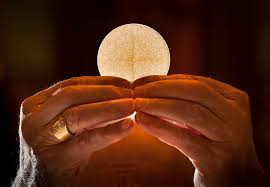
The Promulgation of the New Law
At a certain time during the course of his earthly ministry “one of the teachers of the law” came to Jesus and asked him: “Which is the greatest of all the commandments?” “Love”, that is, “Love of God” and “Love of Neighbor”, Jesus replied. I purposely chose this text in order to show that love is not in conflict with the law. Any law that runs into conflict with love is an unjust law and, therefore, stands to be challenged or forced to re-booth or entirely abolished – such a law may be validly and legitimately promulgated but that does not change the fact that it is an unjust law. The power and force of responsible social action for justice, development and peace grow out of this risky engagement. Law finds its greatest fulfillment when it serves love.
In the Gospel of John Chapter 15: 9 and 12; Jesus explicitly pronounced the very words of the new Law: As the Father has loved me, so do I love you. Remain in my love. A New Commandment I give you: Love one another as I have loved you, and by this, the world will know that you belong to me”.
In Paul’s 1st Letter to the Corinthians, Chapter 13:13, Scripture says: Now there are three things that last: Faith, Hope and Love. And the greatest is love.
In Trinitarian Theology, the Holy Spirit is referred to as Person-Love. The greatest experience of the Holy Spirit is that which is achieved by sincere participation, reception and devotion to the Eucharist. The Apostles and all those with them were dedicated to the Breaking of Bread and to charity. It was under this Eucharistic disposition that the Holy Spirit was made manifest in their life. It was under this disposition of Love that they were first referred to as “Christians” in Antioch (Acts 11:20-21).
But the best and most finest moment of love is known as sacrifice.
A friend of mine – a beautiful girl – narrated to me a version of her own experience of the “October Rush” thing in one of the tertiary institutions in the country. One nice looking and intelligent Akwa-Ibom boy who incidentally was also a new student like herself approached her for friendship and kept on disturbing her to the point of embarrassment. On this fateful day they had lecture on one of the General Courses and in a big hall, this guy came to her in the midst of three of her other friends while she was on her way to the lecture hall and pleaded with one of the friends to please teach him how to say “I love you in Igbo”. My friend intervened abruptly and told the boy that the way to say “I love you” in Igbo is “Abu m onye apari”, that is, “I am very foolish”- a manifest abuse and inversion of the original statement. Being a foreigner to Igbo Language but believing that he had gotten the true translation, the boy carefully memorized this Igbo translation of “I love you” which he had learnt from his would-be lover over and over again and then went away. My friend said she happened to be sitting at the front row during the lecture on the General Course. And as the lecture was going on and while the lecturer was seated at one of the seats in the back row lecturing, the boy stood up from where he sat, came around to the front row seat where she herself was seated and, in a loud voice that got the entire class distracted and embarrassed, proclaimed aloud to my friend saying “…. (name withheld) Abu m Onye Apari”. The whole class filled with Igbo speaking students went into frenzy with laughter. And from that day, his name became “Onye Apari” – the fool.
Let’s leave that story here. But it suffices to observe that love can sometimes make us appear foolish.
This episode clearly captures the paradox associated with the incarnation as God came searching for us, and goes ahead to raise the necessary question that has engaged exegetes and theologians alike: Why the God-Man? What is it that God wanted or what was He looking for that prompted him to squeeze himself and allowed the whole content of divinity be accommodated unreservedly in the person of the Son of Mary? If there is anything that looks very foolish in human history, it is the event of the incarnation. And yet it did not end here. There is, very much latter to follow, the further expedition into the Cross and the consummation of this Cross by the institution of the Eucharist.
Sacrifice has the capacity to reduce, and most often may require that the greatest of all men be reduced to the least of all; the richest to a pauper and the most handsome to the ugliest. Yet sacrifice is not about the perpetual paralysis of vital human accomplishments incurred and imposed through the penal process but rather a positive disposition of love to the hard realities that must necessarily be confronted and cannot but be confronted in all circumstances of its (love) own existence.
Thus, having washed the feet of the apostles, he enjoined them to follow his example.
As Christians, and precisely as Catholics, every time you come to Church to hear Mass, Jesus Christ – the Author of Life, the Author and Finisher of our Faith and Our Lord and Master - calls all of us who are his friends(I wonder who in this congregation is his enemy) to himself. We see him, in this capacity, saying: Behold, I stand at the door and knock. If anyone hears my voice and opens the door, I will come in to him and eat with him, and he with me (Rev.3:20).
Jesus allowed himself to assume the status of mere food for your sake and your sake – so that you and I can have life and have it more abundantly. Only heaven can tell what it costs him to remain this way perpetually! Only he himself can tell what he has suffered in the many hands of traitor priests who have no qualms of conscience selling the Eucharist to the highest bidder; only he can tell how many Tabernacles today have been transformed into a prison where the Son of God is held hostage, derided and mocked by being abandoned and allowed to undergo further bruises under the form of bread and wine; only he can tell the many places, including pit-latrines and satanic altars, where he had been thrown into or deposited by unworthy and irresponsible communicants who live their lives in sin.
But my consolation is that proper investigation of the foolishness that grows out of the exercise of love is not and cannot be equiparated with the stupidity and arrogance of abusive, immoral and irresponsible engagements and costly expeditions in vanity that has gripped our world today. It has a different source. It is the foolishness of God. And the foolishness of God is far more greater than the wisdom of men.
Therefore, a seemingly centrifugal reductionism incurred by the One Reality that is at once Good and Beautiful as a direct consequence of a love action is not and must not be confused with the other type accomplished by sin. The former is a product of radical creative ingenuity freely accomplished in joy, faith and hope, the later is a product of infamy accomplished in disobedience, acute misery and poverty of initiative. The former is a rite of passage through the eyes of a needle undertaking by a camel while the latter is a truck of baggage forcing itself through into the King’s palace in a very violent way. The former is a miracle which nourishes life. The latter is about death and total annihilation.
Some Necessary Considerations
The Eucharist is the greatest presence of God by virtue of which the Holy Spirit accomplishes in the Church and in our individual lives through the ministry of a validly ordained Catholic Priest, the recreation, redemption and sanctification of the created order. Therefore, the most important custodian of the Eucharist is the Holy Spirit but He does this in and through the Church. To offend the Holy Spirit is a sin that cannot be forgiven. For Catholic members who have formed the habit of donating the sacred specie to secret cults in place of the human sacrifices which are expected of them by these cults, this is an illumination of the implication of your actions. It is one way of playing the Judas in today’s Church.
Given the devastating impact of the sex-abuse of minors that is threatening to pull the four walls of the Church down in Europe/America and which is making its way to Africa; the menace of corruption and terrorism that continue to attack and destroy the Nigerian society; and the complacency that marks the disposition of some of our Christians especially those in the ranks of the clergy and in other leadership positions in the Church in face of these anomalies, pharisaism is quite a topical issue in the Catholic Church today. Have you been falsely accused, made mockery of, declared a rebel and pushed out of your position as a member of the Church Council, CMO, CWO, CYON, or even as a priest by any member of, or collectively, by the “Brood of Vipers” in the Church. Do not go away; there is no other place you can go to. Be consoled and educated by the example of the Eucharistic Jesus. He tells you today “Remain in my Love” (John 15:9).
Pharisaism is a very dangerous specie of religious virus spread by Church leaders which attacks the faith of the Church at its roots with the violence and terrorism that are characteristic of the HIV/AIDS Virus. It glories in the euphoria of itself being a monumental detraction to the birth, growth and development of the faith of the individual members of the Church. No wonder Jesus Christ warned his followers in Mathew’s Gospel, Chapter 23:2-4 thus:
“The teachers of the law and the Pharisees sit in Moses’ seat. So you must be careful to do everything they tell you. But do not do what they do, for they do not practice what they preach. They tie up heavy, cumbersome loads and put them on other people’s shoulders, but they themselves are not willing to lift a finger to move them.
The other side is also risky. It is about what I would call a Bread and Butter Christianity or what is generally referred to as a Crossless Christianity. It is a sham. This is the dominant character of modern day Pentecostalism. Pentecostalism is Satan’s strategy for distraction and diversion of believers’ attention from the Eucharistic Jesus, by deployment of the instruments of fear and ignorance against them, so as to deny them the True Christian Identity and their Citizenship Rights as special guests to the Wedding Feast of the Lamb and as co-heirs with Jesus Christ to the Kingdom. Today, many people are carrying bibles and sitting on divisive thrones to talk about solemn mysteries they know and understanding nothing about, and then back the products of their weird imaginations with much abracadabra in the name of Miracle and Prophetic Service. Different forms of genocide are being perpetrated against Christians in many places today across the globe. But while Hope in the Resurrection annuls and voids the long-term effects of the pain of such genocides, the pretensions and superficiality of Pentecostalism attempt to stifle and kill this Hope by distracting the attention of believers from and eclipsing the Eucharistic faith which is the one and only real link to this hope.
Jesus cut his way through Pharisaism and Pentecostalism and emerged successful in the accomplishment of his priestly responsibilities. This is significant for all of us Christians, both as clergy and as members of the laity.
This is the END-TIME! Therefore, beware of the Pharisees!! Beware of Pentecostalism.
In our journey through faith, we must be conscious of the trap that Satan puts on our path in order to distract us. Judas abandoned the abode of Divine Love and went out in search of wealth and Satanic favor, and was caught up in the Darkness of Death. What a tragedy! He regretted it. But regrets only do not change anything. Repentance does the magic.
The Jews did their own inhuman deed. After they had finished and left, the Bible reported that the Temple veil was torn into two - from top to bottom - thus revealing a greater and more powerful force which dwarfed, countered and repudiated whatever power the Pharisees thought they possessed over Jesus and the false witnesses they laid against him. Earthquake took over the earth and destroyed and foundations and structures of the Tower of Babel the Pharisees –in their effort to escape the demands which love and service imposed on them - had erected to serve as parallels to the Temple of God and Eternal Truth situate in the person and ministry of Jesus Christ. And thick darkness covered the surface of the Earth – yet, another tragedy! As a people and a nation, the Jews are still struggling to acquire and win a space in the world map and to rebuild their nation.
Pontius Pilate could have used the opportunity provided by the “most evident truth” laid at his feet by virtue of his encounter with Jesus Christ to win himself one of the most enviable positions in the pages of Sacred History. But he reneged in his duty as a judge and in this way became the most despicable face of cowardice which adorned the walls of the history of the Great Roman Empire. At the end, he was judged by his own words which he placed as an inscription on the cross “Jesus Christ, the King of the Jews” in his search for relief from the interrogations and torture of conscience. Providence would letter push him aside and then rewrite the inscription thus: “Jesus Christ is the King of the Jews and Gentiles, including Rome”, thereby fulfilling his fears and the fears of all the generations that would come after him about what he boorishly and sheepishly conceded to Jesus when he asked him “Are you the King?” and “What is Truth?”. Today, Jesus Christ rules Rome.
Unbelief. Faithlessness. Over–familiarization with Jesus Christ. Hatred. Presumption. Bias. Prejudice. Pride. Arrogance. None of these can help us in our journey through faith. Instead, they destroy us. This is the story of many Church Leaders today. This has also been there at work in ancient history. These were also the precursors to the destruction of the thriving Egyptian Civilization. For instance, the last time Moses went asking Pharaoh to let the people of Israel go after he had fulfilled his own part of the agreement he entered into with Pharaoh to call off the second to the last plague; and Pharaoh, thinking he had become free from his own part of the obligation, ignored Moses and walked him out of his palace, telling him: “I do not want to see your face here again”. Moses, replied Pharaoh: “Ok., and you will never see my face again”. I was opportune as a secondary school boy in Class 3 in 1985 to have come into contact with a book called “The March of Civilization”. Our History Master then knew the subject well up to his finger tips. And we used to call him “Mesopotamia”or “Amorabi” in reference to the topic of one of the chapters in the book. In that book, you will come to see that Egypt – Africa – was the cradle of civilization. But today what position does Egypt occupy in the list of civilized countries?
The consequences of neglecting and rejecting GOD’S WILL that took effect after the death and resurrection of Jesus Christ in the form of the Eucharist are always tragic for nations, peoples and individuals.
On this basis, and born on the wings and euphoria of the feast of the priesthood of the order of Melchizedek being commemorated today, I state as follows:
- The event of the One Year Anniversary of Amoris Laetitia provides us with the opportunity of providing Pope Francis’ Encyclical “Amoris Laetitia” with the “Hard Cover” it needs to wear before it can comfortably take its place as an effective tool of missionary work in Africa.
- I believe in Biafra. Biafra is Real. But the Igbos must be very careful in whatever contents they feed into the concept of Biafra; first, as an idea; second, as a struggle; and finally, as a Sovereign Independent State.
- The U.S. President Donald Trump must resolutely pursue the project of to warding off terrorists from America by tightening the security around her boarders and by allowing America be born on the wings of Prayer and Divine Government. But this project has not much in common with the erection of walls and the introduction of disabling clauses to U.S. Foreign Policies on immigration and Citizenship.
The Last Supper
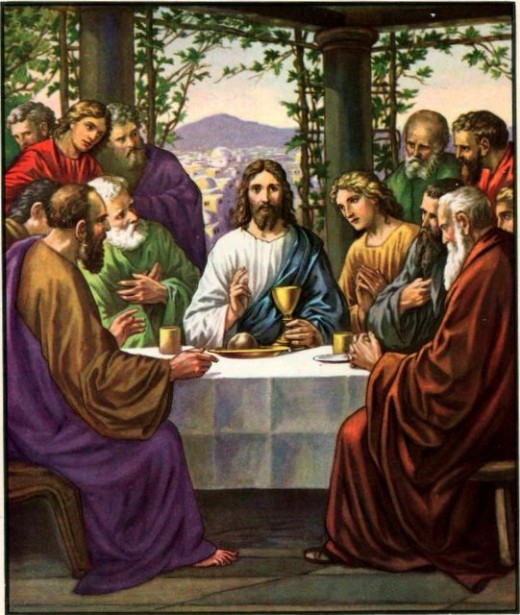
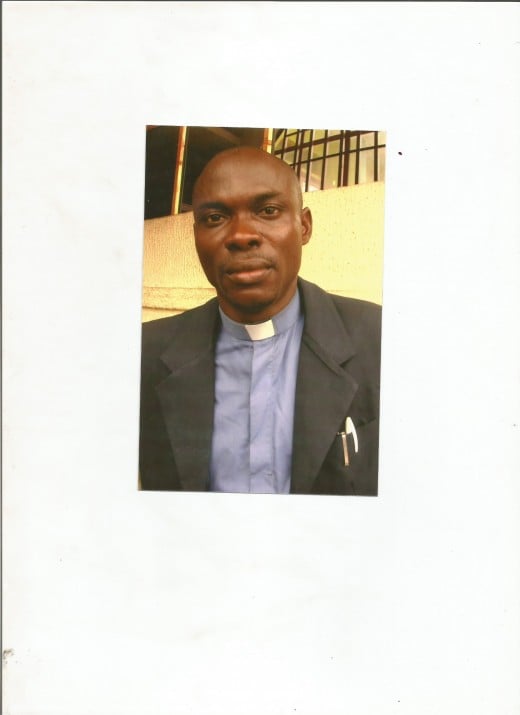
Conclusion
I had the privilege to come across a special publication of the Daily Times Newspaper on the visit of Pope John Paul II to Nigeria many years back which its front page read: “Nigeria Welcomes Pope John Paul II”. It was written by Mac Alaba, Enyinaya Iroha and Richard Adeniyi. In his Goodbye Message, Pope John Paul II had said: I leave my message of brotherhood, friendship and love with you. Wherever you are, this message of Love belongs in your religion as it does to mine. What I am saying is that you and every other (person) are loved by God and worthy of Love.
While preaching a Homily during the funeral ceremony of Pope John Paul II, Former Cardinal Ratzinger (the man who became Pope benedict XVI) said: If the call of God deserves a response, then that of Pope John Paul II is exemplary.
The Eucharistic Jesus invites you and I to come and experience him. What quality of response are we giving to him?

